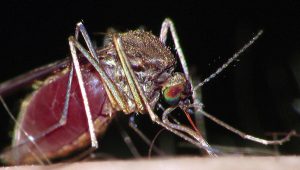
With mosquito season heating up in the United States, reporters may be looking for new angles to write about these outdoor pests.
Consider innovations in mosquito control. As fears increase about damage to the environment and bee populations, many states are experimenting with biological alternatives to spraying.
In November 2017, the Environmental Protection Agency approved the release of mosquitoes infected with a naturally-occurring insect bacteria that reduces certain mosquito populations but is considered safe for humans, pets and the environment. A Lexington, Ky., company, MosquitoMate, infects male mosquitoes with the Wolbachia bacteria, with males passing on the bacteria to females when mating. Over time this is expected to lead to a decline in the population of Aedes aegypti mosquitoes, which can carry the Zika and dengue viruses. The EPA has approved the release of these type of mosquito in 20 states for five years, according to Time magazine.
The agency also has approved the release of genetically modified male mosquitoes created by Oxitec, a unit of Germantown, Maryland biotech firm Intrexon. The males mate with females and pass on genes that cause the mosquito to die before it reaches adulthood. The product has been approved for testing in California, Florida and Texas.
“It’s a non-chemical way of dealing with mosquitos,” David O’Brochta, University of Maryland entomologist told Nature magazine.
There also is ongoing research to edit the genes of mosquitoes that carry malaria to prevent the bug from passing it on to humans. Scientists at the University of California, Davis, are making use of the strides in CRISPR gene-editing tools to make it impossible for the mosquito to become infected with the malaria parasite. The modified mosquitoes are being tested on a small island of Africa, according to WebMD.
The National Institutes of Health is funding additional alternative mosquito control efforts. The National Institutes of Allergy and Infectious Diseases has provided financial support to Riverside, Calif. -based ISCA Technologies Inc., which is developing a mosquito larvicide that is safer to the environment by using the bacteria Bacillus thuringiensis. NIAID also is supporting the development of new mosquito trap made by Woodinville, Wash.-based SpringStar Inc. that captures egg-laden female mosquitoes.
Meanwhile, state and county vector control programs are tasked with mosquito control each season. Entomologists go out and collect mosquitoes to determine whether they might be carrying diseases harmful to humans. Vector control officials also treat standing water sources to prevent mosquitoes from developing.
Whether local officials will adopt some of these new biological tools is yet to be seen, however. “These techniques show promise, but logistically they are difficult to deploy,” Joe Conlon, technical adviser to the American Mosquito Control Association, told WebMD. “They are unlikely to serve as the sole means of control but will be utilized as adjuncts to known mosquito control products.”
Are any of your local vector control programs experimenting with alternatives to mosquito spraying this summer? Is there a local company or university that is developing new mosquito control tools? Check out the stories below and a new AHCJ tip sheet on mosquito season for additional coverage ideas.
Further reading
- New directions in mosquito control: A real buzzkill (NIH)
- Mosquito threat spurs new ways to tackle old pests (WebMD)
- Summer of mosquito swarms possible this summer (WebMD)
- Mosquito regulatory updates (EPA)
- S. EPA approves killer mosquito to fight disease (Nature)
- There is a new way to wipe out mosquitos in the U.S. (Time)








